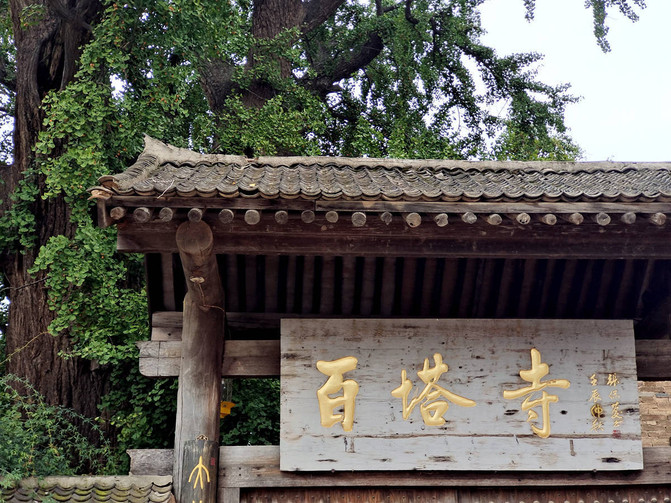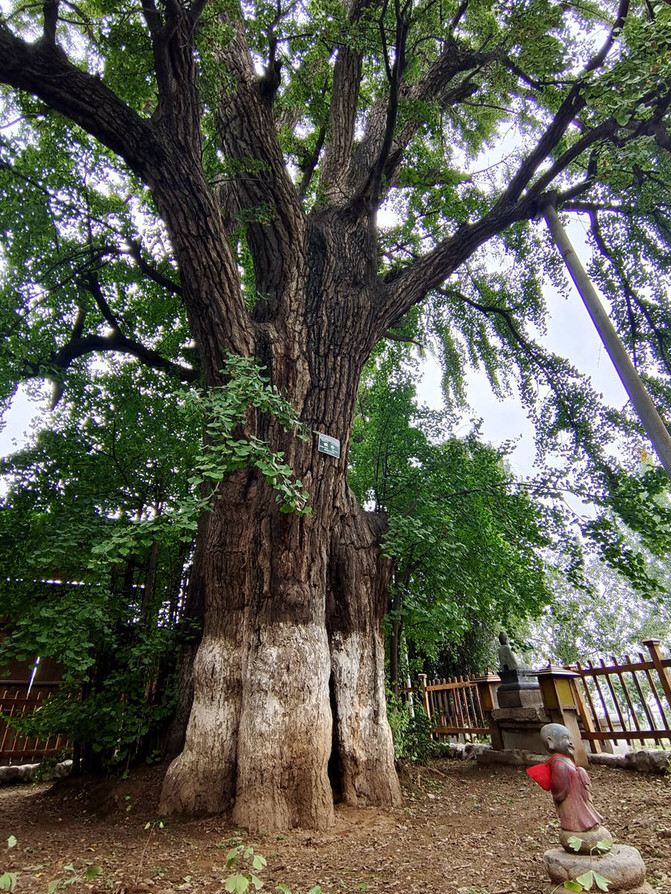You know what? The 1700-year-old ginkgo tree in Baita Temple is 300 years longer than the ancient Guanyin Temple
Baita Temple is located at Tianziyukou at the northern foot of the Qinling Mountains and is under the jurisdiction of Wangzhuang Township, Chang 'an District. You don't need to ask for directions, navigate directly, turn in from Huanshan Road, and the transportation is very convenient.

Due to the mask, the temple door was closed. There is a high viewing platform opposite the temple gate, which can just take pictures of the entire courtyard. From time to time, people pass by and lie under the crack of the door and look in. After taking photos, I realized that the sightseeing platform was actually built on the roof of the toilet. I applauded this idea! The toilet is clean, with squatting pits, toilets, washbasins, and third-party toilets. It is by no means the "toilet" I have ever been to.


Baita Temple is the ancestral courtyard of the third-order Buddhist sect in China. During the Sui and Tang Dynasties, it was a place for Buddhist monks to practice. It was at its peak during the Sui and Tang Dynasties. It was huge in scale, magnificent in temples, and numerous monks. It covers an area of thousands of acres. It is known as "riding a horse and guarding the mountain gate." Unfortunately, there is only this small courtyard now. Fortunately, the ginkgo tree in the courtyard is still there.

Walking around the temple, I found that the gate where I had taken the photo was the west gate, and half of the gate on the south wall was open. I tried to look around and saw an old man and hurriedly explained. The old man put his hands together and said "Amitabha". I even said to take a few photos and left.


The courtyard is not big, facing the Daxiong Hall. There are two pine and cypress trees in front of the hall, which are lush and lush. There are several ancient towers between the walls and the bamboo, wood and flowers inside the door. A large vat filled with water floated a few fallen leaves. If it was a large monastery, the clock on the east side would be hung on the bell tower.



Behind the Daxiong Hall is the 1700-year-old ginkgo tree. The thick tree trunk and huge root system occupy almost the only open space.

Looking up at the dense leaves, ginkgo fruits hang all over the branches. The fruits blown by the autumn wind fall freely, which is much more aggrieved than the 1400-year-old ginkgo trees occupying the huge courtyard of the ancient Zen Yin Temple.

After all, it was not open to the public. After walking around the tree, taking a few photos, he closed the door and left with a hint of apology.


There are several good B & Bs around Baita Temple, as well as a traditional handmade home-brewed workshop. Rumors have it that Shanxi people come here to buy vinegar. In another ten to twenty days, the ginkgo trees will gradually enter the appreciation period, and the village has already begun to build a parking lot. You can imagine how lively it will be and how happy the villagers will be. Just wait for the beautiful scenery.

Previous Article:How to play in Xi'an on the weekend
Next Article:The "antler beam" in the dream
